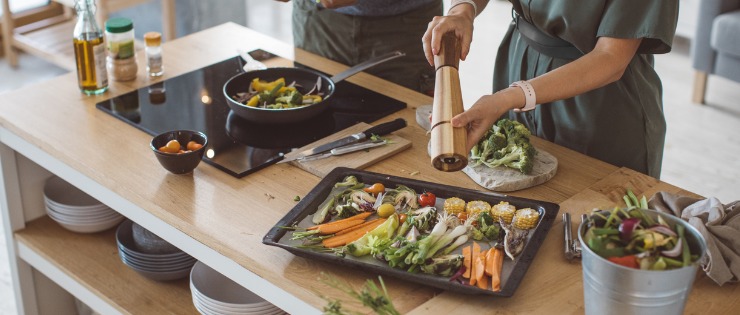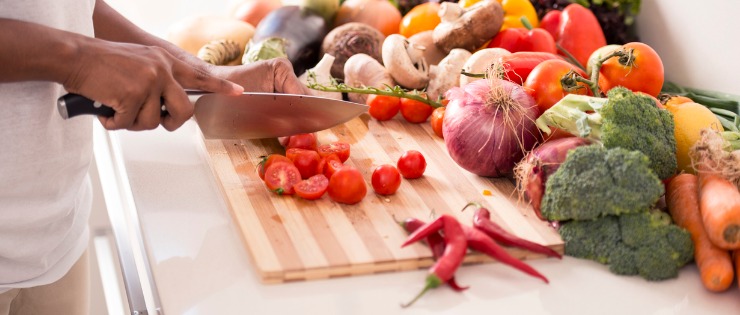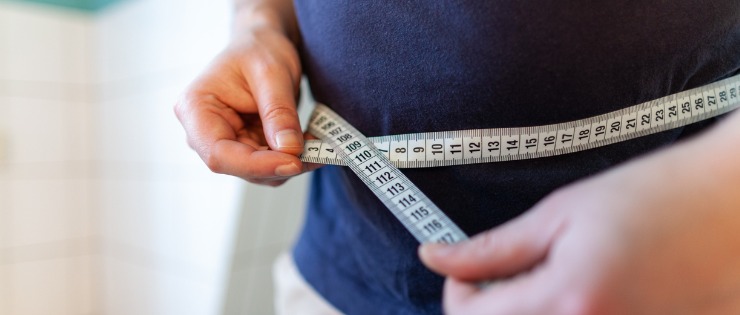
Calories and kilojoules are used interchangeably, but not everyone knows the difference between the two.
Food provides energy for the human body to function. The energy is obtained from food which can be measured in both kilojoules and calories. For example, 110kJ to calories is approximately equal to 26 calories, helping you understand the energy content of foods in both units. When you know the number of kilojoules or calories of food, you can estimate how many you’re consuming each day.
Some people choose to keep track of the kilojoules or calories they consume to ensure they aren’t eating too many or too few. If a person wants to lose weight, they will need to consume fewer kilojoules than they burn.
What's the Difference Between Calories and Kilojoules?
A calorie is a unit of measurement. It’s the amount of energy required to increase the temperature of one kilogram of water by one degree Celsius.
A kilojoule is essentially the same thing, but the scale is different.
1 Calorie = 4.2 kJs
1kJ = 0.2 Calories
For example, if you want to convert 110kJ to calories, the result is about 26 calories.
Australia officially stopped using the term calories in 1988.
Kilojoule Counting
Some people are so concerned about their weight that they spend time every day counting the kilojoules they consume. They can recall the calorie content of many foods and keep a note of their intake with paper and pen or by using an app.
Overfeeding studies have found people who eat more calories than they burn-off end up gaining weight. One study found that a weight loss program that focused on calorie counting can achieve an average weight loss of 3.3kg compared to a program that doesn’t count calories.
Danger of Counting Kilojoules
It’s important not to only look at the kilojoule content of food and avoid any that are high in kilojoules. Some foods are high in kilojoules, but offer excellent nutritional value and should be eaten as part of a balanced diet.
Foods that are part of the healthy eating pyramid that are high in kilojoules include nuts, red meat, pork, beans and fatty fish. But they offer plenty of nutrients that help keep us healthy.
The Labelling of Kilojoules
In Australia, food manufacturers are required to list the kilojoule content in 100g or 100 ml of the product. Some manufacturers also choose to include the kilojoules per serving. For foods that don’t have labels, consumers can check the list of fresh foods on the Food Standards Australia and New Zealand website.
Foods high in kilojoules that are marketed towards children might use the term ‘energy’ to put a positive spin on its kilojoule content.

Eating the Right Number of Kilojoules
Our bodies need energy to function and do our day to day living activities. Most people who eat a well-balanced diet and watch their fat and salt intake get the right amount of energy their body needs.
It’s only people who want to lose, gain or maintain their weight that need to be concerned about the kilojoules they consume daily. Everyone has a slightly different energy requirement, but you can get an estimate of what yours is based on your age, gender, weight and level of physical activity. For example, converting 110kJ to calories gives you a helpful reference point to better understand how much energy a food item provides.
If you’re eating far more kilojoules every day, you will likely gain weight over time, and if you’re under, you will likely lose weight. By making small changes to your kilojoule count daily, you can make a big difference over time.
Foods High in Kilojoules
If some of your favourite foods are on this list, eat them in moderation to ensure you aren’t consuming more kilojoules than you need.
Butter (10g) - 3045 kj
Bacon (40g) – 1975 kJ
Salami (90g) – 2030 kj
Chocolate Biscuit (20g) – 2200 kJ
Almonds (10-15g) – 2235 kJ
Mayonnaise (20g) – 2950 kJ

Foods Low in Kilojoules
Vegetables are some of the lowest kilojoule foods with high nutrient values.
Pumpkin (100g) – 65 kJ
Tomato (120g) – 60 kJ
Lettuce (20g) – 50 kJ
Fresh skimmed milk (230g) – 140 kJ
Tea (230g) – 2 kJ
Processing of a food can change its kilojoule count dramatically. For example, if you eat 100g of fresh apricot, it's 110 kJ (110KJ to calories is about 26 calories), 100g from the can is 450 kJ, just 25g of dried apricots is 775 kJ, but stewed with no sugar is just 90 kJ.
Increasing Kilojoule Intake Without Increasing Weight
If you enjoy your food and want to consume more kilojoules than your recommended energy requirements, there are a few things you can do.
Increase Muscle Mass
Muscles need energy, so increasing your muscle mass will mean you can consume more kilojoules without them turning to fat. Your muscle mass depends on the type of work and leisure activity you do to build muscle. Someone in a sedentary job role can expect to have less muscle mass than a person in a physically demanding role.
Your age can have a big impact on your muscle mass because you naturally lose muscle in your senior years. Gender also influences muscle mass. One study revealed men had significantly more skeletal muscle in comparison to women.
Increase Your Level of Activity
By moving more, you can consume more. Being active in as many ways as possible can mean you’re burning more kilojoules. More exercise means you use up stored energy and also helps to stimulate muscle development. That extra muscle tissue means you’re burning more energy even when you’re at rest.

Read Food Labels
When you’re doing your food shopping, read the food labels for kilojoule information. Kilojoules in a food item can come from one source or a combination of fat, sugars, protein, carbohydrates or alcohol.
The labels allow you to decide about the nutritional value and number of kilojoules the food contains. Some labels include a serve of the product as a percentage of daily nutrient intake.
Some food outlets are also required to include kilojoule information at the point of sale so you can make a conscious decision before purchase.
Other Measurements
If you’re aiming for a healthy body shape and weight, you don’t need to rely on counting kilojoules, there are other measurements you can use.
Waist Circumference
Doctors have been telling patients about the importance of waist circumference for years. Your waist shows your risk of obesity-related chronic diseases such as Type 2 diabetes, heart disease and some cancers.
Men with a waist circumference of 94 cm have an increased risk, and 102 cm shows a higher increased risk. For women, a waist measurement of 80 cm or more is an increased risk of chronic disease, and a measurement of 88 centimetres or more is a higher increased risk.

Body Mass Index (BMI)
For much of the adult population, BMI is a useful indicator of whether you’re within a healthy weight range for your height. BMI is considered an estimate because it doesn’t make allowances for your age, gender, muscle mass or ethnicity. You can check your BMI using the Heart Foundation’s calculator.
FAQs About Kilojoules
How many kilojoules do we use per day?
The average adult burns 8,700 kilojoules each day. But this is only the average, some people burn far more and some far less. Your energy need will depend on your age, sex, height, weight, the amount of muscle you have and level of activity. For example, a young adult male who has a manual job needs far more kilojoules than an older person.
If I want to lose weight, how many kilojoules should I consume?
You can lose weight by eating fewer kilojoules than your body needs to fuel itself. Your body will use its existing fat stores if you eat fewer kilojoules than required.
You can also lose weight through movement, which burns energy. Movement can include anything from exercise to manual work. You even burn energy while sedentary and sleeping. The body uses energy to circulate blood flow around the body, to breathe, repair cells and digest food while sleeping.
What is an empty calorie?
An empty calorie is eating foods that are high in calories with little nutritional value. Sweet treats and savoury snacks are examples of foods that contain plenty of empty calories. Foods high in empty calories don’t satisfy us for long before we’re hungry again and looking for something else to eat.
If you’re keen to enjoy the benefits that come with being a healthy weight, check out our Healthy Lifestyle Cover.